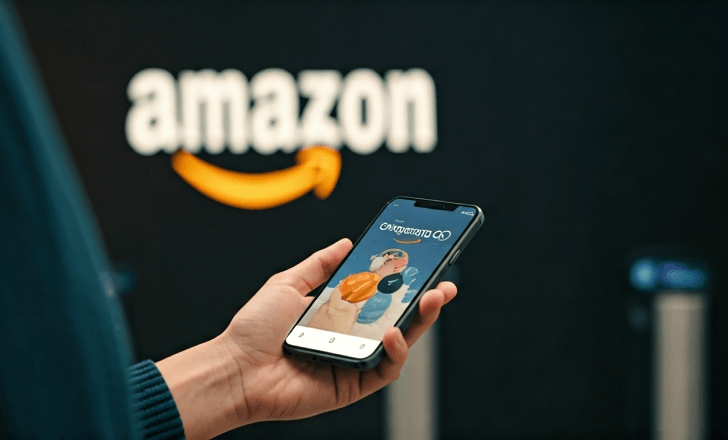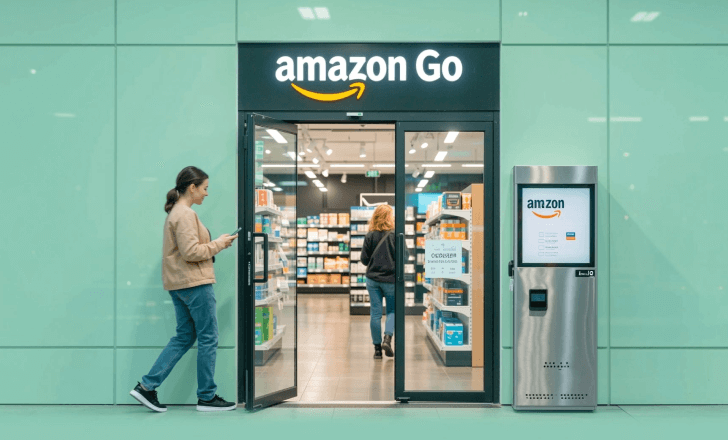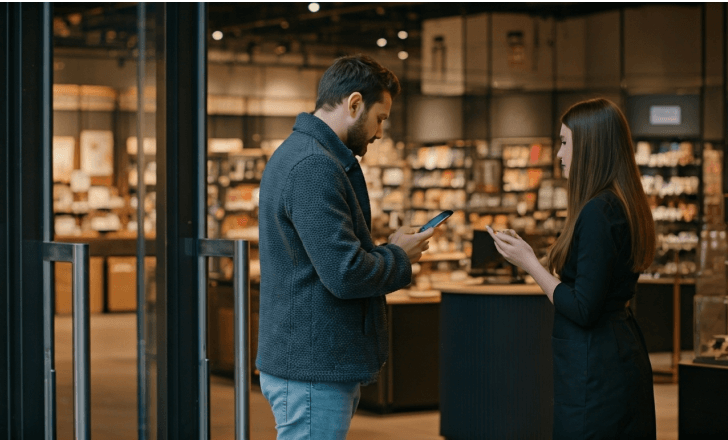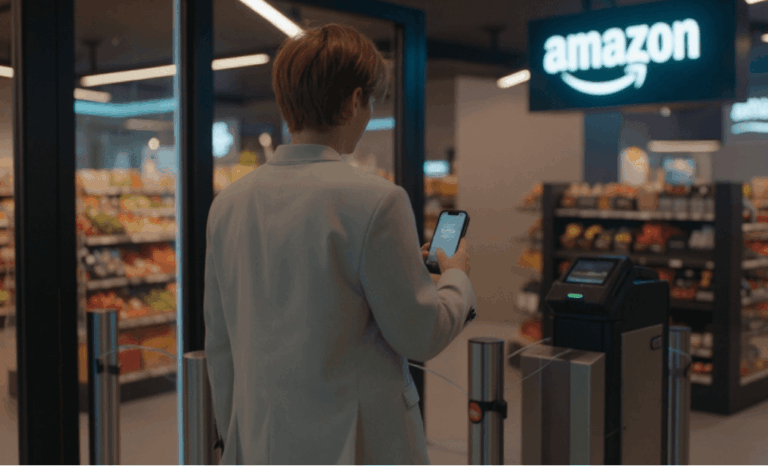The power behind the Amazon Go QR code
QRCodeKIT has been helping brands create and manage every kind of dynamic QR code — editable, trackable, and secure — long before cashierless shopping became a trend. This same technology now underpins innovations like the Amazon Go QR code, where a single scan connects the shopper’s identity, payment method, and shopping session through the Amazon app.
When Amazon Go opened its first store, it introduced a completely new way to shop without cashiers, queues, or checkout counters. As soon as visitors scan the store code on the gate, the system recognizes them instantly. Every item they pick up or put back is tracked automatically through a network of cameras and sensors, and when they leave, they’re charged through the app — no waiting, no checkout, no cash.
This model not only showcases Amazon’s vision for the future of retail but also highlights how QR codes have become the backbone of frictionless digital-physical experiences.

How does the Amazon Go QR code work?
To understand how the Amazon Go QR code works, think of it as a digital key. It connects your app, identity, and payment information to the store’s smart system.
- You open the Amazon app and tap “In-Store Code.”
- A unique QR code appears on your screen.
- You scan it at the entrance gate to start your shopping session.
- The cameras and sensors follow your movements and items selected.
- When you walk out, your account is charged automatically.
This seamless flow is what makes Amazon Go famous: the combination of the app, store code, and smart devices creates a unified and secure shopping experience.
Why did Amazon choose a QR code system?
Amazon could have used NFC or facial recognition, but the company chose QR codes for three main reasons:
- Universality: Every smartphone can display or read a QR code.
- Security: Each store code is generated dynamically and tied to one user session.
- Speed: QR scanning is fast, reliable, and doesn’t require additional hardware.
By using QR codes, Amazon avoided the privacy concerns linked to biometric data and created a process that anyone with the Amazon app can use.
What happens if your Amazon Go QR code doesn’t work?
Sometimes, users report that they’re unable to scan, see a blocked screen, or the app won’t open. Most issues are easy to fix:
- Check that the Amazon app is updated to the latest version.
- Make sure your screen brightness is high enough for the scanner to read the code.
- If the gate doesn’t open, try closing and reopening the app to refresh the QR.
- Ensure your payment method is active and your internet connection stable.
If problems persist, the in-store team or Amazon Go support can help verify your device and reset your access.
How does the store code connect digital and physical worlds?
The store code is more than a ticket to enter. It’s the bridge between your digital identity and the real-world store. Once scanned, every product you grab, hover over, or put back becomes part of a personalized data stream that helps Amazon understand customer behavior.
It’s a living example of how QR codes can go beyond linking to a webpage — they can unlock environments, track actions, and streamline transactions.

What can other retailers learn from the Amazon Go QR code?
The success of Amazon Go shows that QR codes can improve retail experiences far beyond payment. Other stores can adopt similar strategies to:
- Speed up entry and membership verification.
- Offer personalized promotions through connected apps.
- Enable self-service pickup or return systems.
- Protect transactions with dynamic QR validation.
Even small retailers can integrate similar features using dynamic QR codes, like those created on QRCodeKIT, to link physical actions to digital content, offers, or services.
Are QR codes the future of smart retail?
The Amazon Go model suggests that the next evolution of shopping will rely on a combination of sensors, apps, and dynamic identifiers. QR codes remain the most flexible and accessible bridge for this ecosystem.
By scanning a simple pattern, customers can log in, learn, select, read, and continue their journey across devices and locations without friction. It’s a vision where the QR code is not just a barcode — it’s the passport for every digital interaction in physical spaces.
How can dynamic QR codes improve everyday experiences?
Outside of Amazon’s ecosystem, dynamic QR codes are already helping brands enhance their content and services. With tools like QRCodeKIT, businesses can:
- Update links or destinations without reprinting.
- Track scans by time, location, or device.
- Protect sensitive information behind secure redirects.
- Create custom designs that match brand identity.
Whether for shopping, app downloads, or interactive videos, dynamic QR codes make it easy to improve customer experiences — the same principle that powers Amazon Go.

Final thoughts: what Amazon Go tells us about digital trust
The Amazon Go QR code proves that simple, universal technology can support complex systems when designed around user trust. By allowing people to walk in, grab what they need, and walk out, Amazon built a store that feels effortless yet secure.
And that’s a lesson every business can take away: from small cafés using dynamic QR menus to global brands reinventing checkout, the humble QR code continues to redefine how we connect digital and physical worlds — one scan at a time.
